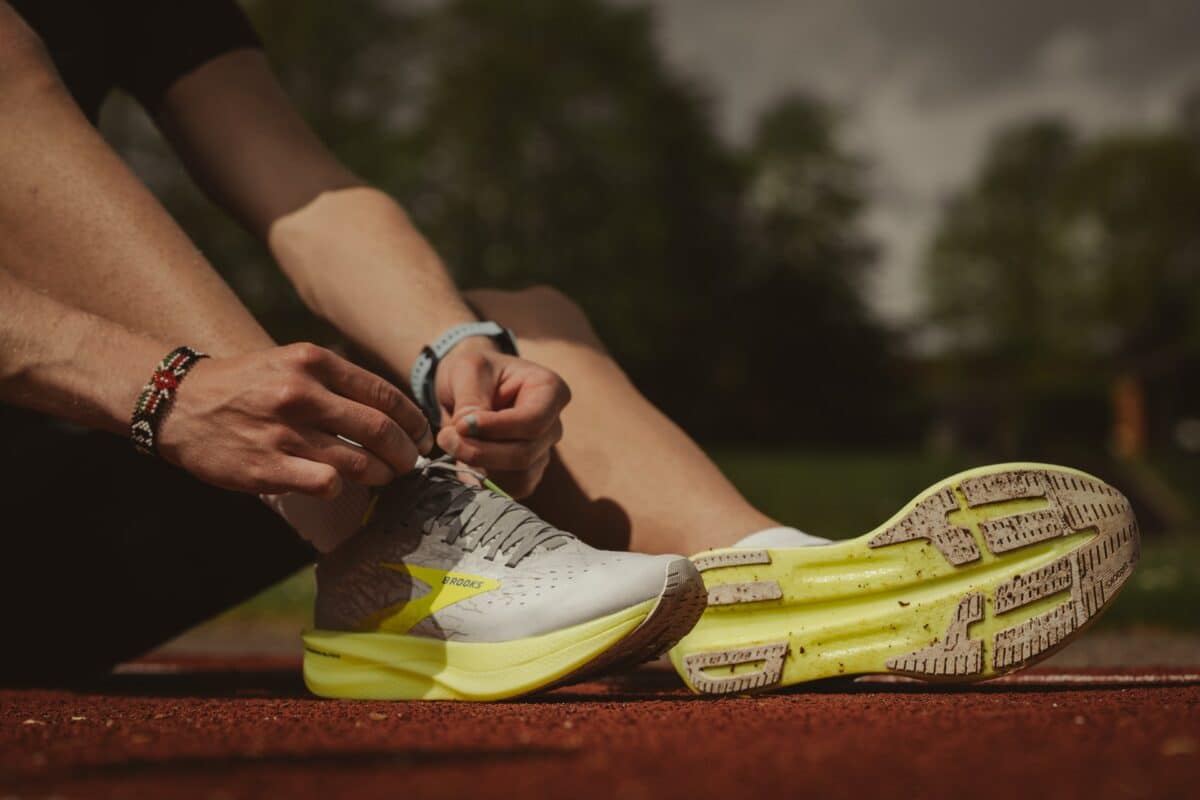
Contents
Don’t trip up, keep it moving! Learn how to optimise your shoelaces for running.
Running clothes, running shoes, running water bottles… it seems like there are hundreds of running-specific things, nowadays. But did you know that there are running-specific lacing techniques?
Why are lacing techniques important for running shoes?
Properly tying your shoelaces can help prevent tripping and injuries while running. A good lacing technique can also prevent your heel slipping, meaning you’re protected from heel blisters. Running with improperly tied shoes can cause excessive wear to your expensive running performance shoes, which can even give you black toenails!
It’s particularly important to pay attention to the lacing technique you use in your running shoes if you have a wide forefoot, generally wide feet, or high arches.
It’s a simple task, but it’s important to get your lacing style right. Don’t try to use a granny knot – a granny knot is a type of knot that is often used to tie shoelaces, but it is generally not recommended for running because it can come undone easily.
How to tie a basic knot
Follow these steps to keep your laces tight for running and avoid heel slippage:
- Start by crossing one shoelace over the other to form an “X” shape.
- Take the end of one shoelace and tie it into a basic knot around the other shoelace.
- Take the end of the other shoelace and tie it into a basic knot around the first shoelace.
- Pull the knots tight to secure the shoelaces in place.
Runner’s knot
There are also a few alternative techniques for tying shoelaces that can be more secure for running. One option is to use a “runner’s knot,” which involves tying the shoelaces in a way that creates a loop on the outside of the knot. This helps to prevent the knot from coming undone while running.
Heel lock
Another option is to use a “heel lock” technique, which involves tying the shoelaces in a way that creates a loop around the heel of the foot. This can help to keep the shoelaces in place and prevent them from coming undone during a run.
Conclusion




Knowing the right lacing techniques for your running shoes is a really important part of your running shoe maintenance and running practice. If you don’t tie your shoe correctly, you could really hurt yourself!
FAQs
How do I know if my shoelaces are tied securely enough for running?
To test the security of your shoelaces, try pulling on the loops formed by the knots. The loops should be tight and not slip or loosen when pulled. If the knots are loose or come undone easily, you may need to re-tie them using a different technique or double-knot them for added security.
What should I do if my shoelaces come undone while I’m running?
If your shoelaces come undone while running, stop and tie them as quickly as possible. It’s important to take the time to tie your shoelaces properly, even if it means taking a brief break from your run. Loose or undone shoelaces can be a tripping hazard and can increase your risk of injury.